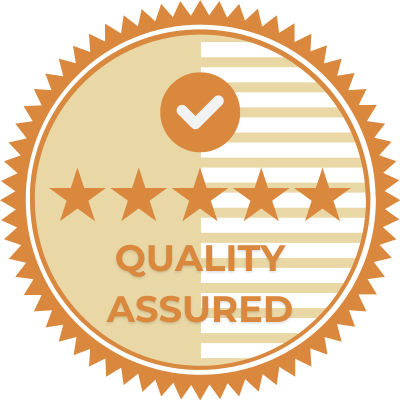Introduction to SALSA Certification
For small and local food producers across Britain, balancing high-quality standards with food safety compliance can be challenging. SALSA (Safe and Local Supplier Approval) certification offers a clear pathway to build trust with consumers and professional buyers alike, helping businesses streamline their processes while maintaining food safety.
Whether you're an established caterer, a farm shop owner, or a small-scale bakery, SALSA certification provides a tailored approach to food safety management. It simplifies what can often feel like a maze of regulations, giving you a solid foundation to build sustainable growth.
Reflection point
How do you currently monitor food safety in your production environment? What systems are in place for ingredient sourcing, preparation, and storage? Addressing these questions is the first step toward certification.
Compliance for all
From rural dairies in Somerset to urban micro-bakeries in Manchester, SALSA has proven to be more than just a compliance milestone. It’s a powerful tool that boosts internal processes, elevates product quality, and opens the door to larger retail opportunities. By earning this accreditation, small food businesses signal professionalism, care, and dedication to producing safe, high-quality products.
What is SALSA Accreditation?
SALSA certification is a dedicated food safety scheme designed for Britain’s small and local food producers. Unlike larger, one-size-fits-all standards, SALSA focuses on the unique challenges faced by smaller businesses, ensuring they meet the expectations of professional buyers and retailers.
The accreditation process is thorough. It assesses food safety management systems in key areas like hygiene, traceability, and product consistency. For many producers - whether a craft brewer in Cornwall or a cheesemaker in Northumberland - SALSA serves as both a credibility marker and a practical guide to improving their processes.
To earn SALSA certification, businesses need to:
- Develop clear documentation, such as cleaning records and food safety protocols.
- Maintain high standards of hygiene and traceability.
- Ensure staff are well-trained in food safety practices.
Think about your current operations:
Do you have systems in place to prevent contamination? How do you manage ingredient sourcing? These reflections can help you identify gaps and set priorities as you work toward certification.
The SALSA Standards Overview
SALSA standards provide a framework for small producers to maintain exceptional food safety while standing out in a competitive market. They help ensure your business meets rigorous quality expectations, not just for compliance but as part of a commitment to excellence.
These standards focus on practical steps like:
- Implementing robust food safety management systems.
- Documenting processes for hygiene, traceability, and quality control.
- Establishing regular staff training to reinforce best practices.
The standards aren’t just about ticking boxes. They’re tools to protect consumers, reduce risks, and build credibility with buyers. Many businesses, from small-batch brewers in Scotland to independent bakeries in London, have used SALSA certification to strengthen their reputation and grow their customer base.
Detailed SALSA Standards
The SALSA certification covers diverse areas, from food production to storage and distribution. Here’s a closer look at what’s involved:
- Food and drink production: The foundation of SALSA certification, these standards ensure rigorous food safety measures at every step - from ingredient sourcing to final product dispatch.
- Storage and distribution: Standards focus on temperature control, product handling, and logistics, ensuring product integrity throughout the supply chain.
- Specialist standards: Tailored options like SALSA Plus Beer and SALSA Plus Cheese address specific challenges in niche industries, providing guidance on fermentation, ageing, and microbiological safety.
Practical tip: Start by identifying risk areas in your operations.
Could your record-keeping be more systematic? Are staff regularly trained? Strengthening these areas is key to meeting SALSA requirements.
How to Achieve SALSA Accreditation
Earning SALSA accreditation requires preparation and a commitment to food safety. Here’s how to get started:
- Gap analysis: Compare your current processes to SALSA standards. Highlight areas needing improvement and create an action plan.
- Documentation: Keep detailed records, from supplier specifications to cleaning logs and temperature monitoring. These documents provide critical evidence of compliance.
- HACCP system: Implement a Hazard Analysis and Critical Control Points system to identify and manage food safety risks.
- Training: Ensure all staff understand and follow food hygiene protocols.
The final step is scheduling a SALSA audit. This assessment will evaluate your systems, documentation, and day-to-day operations. By preparing thoroughly, you can approach the audit with confidence.
SALSA Certification Requirements
SALSA certification demands a structured approach to food safety, underpinned by meticulous documentation and proactive risk management. Key requirements include:
- Comprehensive records: Maintain detailed logs for supplier management, cleaning schedules, and product traceability.
- Staff training: Ensure all employees understand food safety protocols, with ongoing refresher courses.
- Equipment maintenance: Regular calibration and preventative maintenance of equipment are essential to meet hygiene standards.
Reflection point
Are your current processes aligned with these requirements? Regular self-assessment can help identify areas for improvement.
SALSA Audit Checklist
Preparing for a SALSA audit involves a deep dive into your operations. Here’s what you’ll need:
- Documentation: Comprehensive records of cleaning protocols, temperature checks, and staff training.
- Premises hygiene: Ensure your facilities meet cleanliness standards.
- Risk management: Demonstrate systematic approaches to food safety, from pest control to allergen management.
Practical tip: Conduct an internal audit before the official one to identify and address potential weaknesses. Treat the checklist as a tool for growth, not just compliance.
Conclusion and Significance of SALSA Certification
SALSA certification is more than a badge—it’s a testament to your commitment to excellence in food safety and quality. Beyond compliance, it’s a business asset that builds trust with buyers, expands market opportunities, and enhances operational efficiency.
By embracing SALSA standards, you invest in your business’s future, ensuring safer products and a stronger reputation.
Further Reading and Resources
Stay informed and sharpen your skills with these resources:
- Books: "Food Safety Management" by Yasmine Motarjemi and "Hygiene in Food Processing" by H.L.M. Lelieveld.
- Training: Explore FoodComplianceHQ.com’s online courses.
- Networking: Join industry webinars and forums to stay up-to-date on trends and regulations.
Commit to continuous learning, and you’ll meet SALSA standards and exceed expectations in delivering safe, high-quality products.




